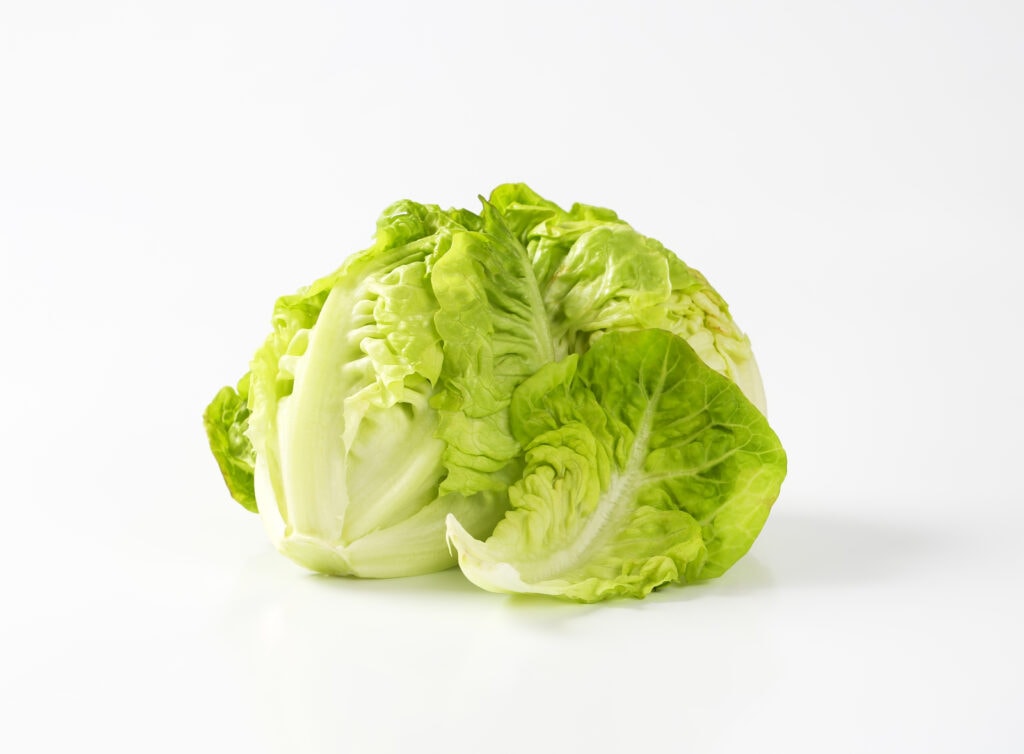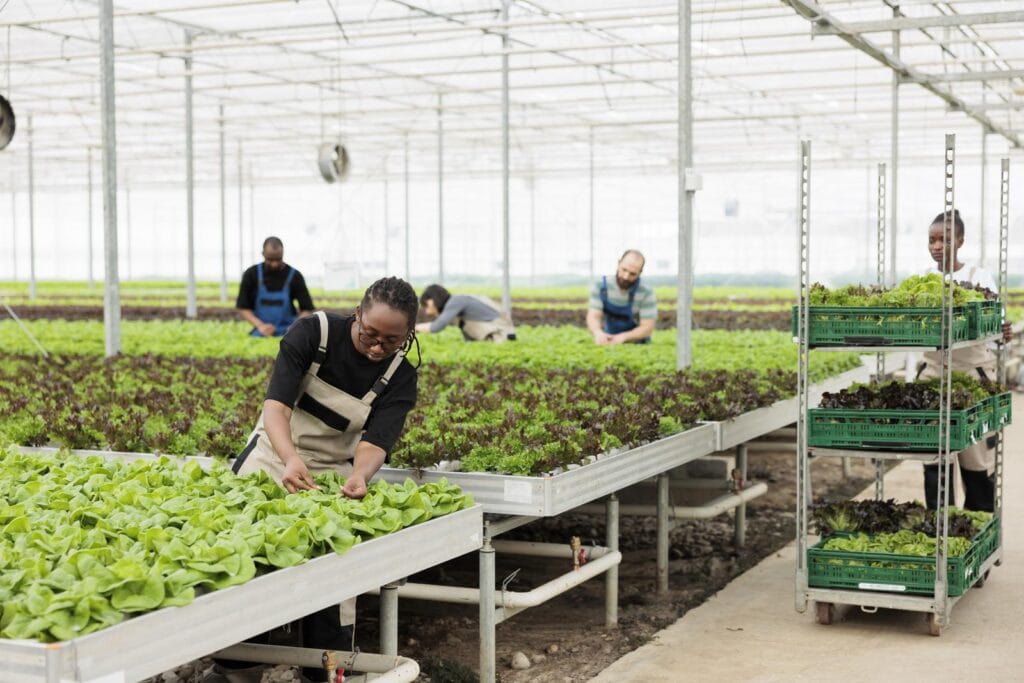Lettuce is a popular first crop for those new to hydroponic gardening – and still one of our favorites.
Even more interesting is that hydroponic lettuce, depending on the type, can be harvested as early as a few weeks after the planted lettuce seeds. There are various types of hydroponically grown lettuce, but they can be classified into two umbrella categories: Whole-head and leaf.
To harvest lettuce from a hydroponic garden, figure out which type of lettuce you’re dealing with. Leaf lettuce is harvested leaf by leaf, while head lettuce is harvested as an entire plant.
If you’re still confused, don’t worry – we’ll break it down below.

How Do You Harvest Lettuce from a Hydroponics Garden?
As we said, you have a couple of options – we break those down here:
Harvesting whole-head lettuce
When lettuce is harvested as a whole head, the plant dies and must be replanted from scratch.

The entire plant, including the roots, can be used when harvested for commercial or market purposes.
If the goal is immediate consumption, the entire head must be cut off in one quick slice above the roots.
The roots would then need to be discarded in a different container or recycled as compost.
When Harvesting whole-head lettuce, it is normal to trim or remove some of the lower leaves around the plant’s base if they aren’t fit for consumption.
Growers who collect lettuce for commercial or marketing purposes typically pick the entire head at once rather than picking individual leaves.
This is because harvesting lettuce in heads requires less time and effort and keeps the nutrients in the system and reservoir more even.
Harvesting leaf lettuce
When growing lettuce using a hydroponic system, most gardeners focus on loose-leaf varieties rather than whole-head crops.
Loose-leaf lettuce is the easiest to grow and comes with many advantages.
Lettuce grown using hydroponics can be regrown repeatedly until a process called “bolting” occurs.

Bolting is the plant’s natural way of producing flowers.
This isn’t good news for us, as bolting produces a hardened and bitter stalk.
In contrast to head lettuces, which are harvested at a specific time, they can be harvested at any point within their harvest season.
They also take up less space in a hydroponic setup, allowing for more quantities or varieties to be grown simultaneously.
This technique keeps the plant healthy, alive, and promotes continued production of leaves for subsequent harvests.
Harvesting this kind of lettuce can begin as soon as there are whole or near-whole developed, bright green harvestable leaves.
The older lettuce leaves, found at the plant’s base, are the ones that should be harvested first.
Relevant Viewing:
Other Sources:
Harvesting some hydroponic lettuce.
Does Hydroponic Lettuce Regrow?
Hydroponic lettuce does regrow. If the roots are not removed, they will regrow on their own. If the roots are removed, replanting the stem or stump of a hydroponic lettuce plant will cause it to regrow.
Using the “cut and regrow” approach to growing hydroponic lettuce, you can collect it multiple times throughout the year to increase your yield.
With this technique, the leaves of a single lettuce plant can be clipped every few days for several months before replacing the plant.
Hydroponics is a more efficient and effective way to grow lettuce than traditional farming, and your lettuce grows faster as a result.
How Long Can Hydroponic Lettuce be Regrown?
The number of times you can grow and collect lettuce from the same plant depends on the plant type and the growing conditions.
It’s safe to regrow lettuce in your garden without worrying about potential adverse effects.
Lettuce grown using hydroponics can be harvested repeatedly until a process called “bolting” occurs.
Bolting is the plant’s natural way of producing flowers.
This isn’t good news for us, as bolting produces a hardened and bitter stalk.

When Is the Best Time to Harvest Hydroponic Lettuce?
Another great thing about growing lettuce with a hydroponic setup is that you can harvest it whenever you want. Hydroponic lettuce can be harvested whenever there are enough new leaves to meet your needs.
To get the most out of your hydroponic lettuce, avoid cutting off the entire head; instead, take the leaves you need.
In hydroponics, the most efficient way of harvesting and regrowing lettuce is the “cut and regrow” technique.

What are the Different Types of Hydroponic Lettuces?
Although thousands of different types of lettuce exist, only a handful are popular due to their exceptional taste, color, resistance to diseases, and rapid growth rate.
Here are some of the most common types of hydroponic lettuces:
- Loose Leaf: This type of lettuce does not grow into a tight head. It comes in many colors and varieties; the classic green and red variants are the most popular. This type of lettuce is widely grown because it is easy to cultivate and can be used in many dishes.
- Crisphead (or Iceberg) lettuce: Crisphead, often known as iceberg lettuce, is a type of compact, round lettuce characterized by its leaves’ tendency to overlap. The inner leaves are milder in flavor, while the outer green leaves are more flexible and can be used to make lettuce wraps.
- Romaine: Romaine lettuce is popular because of its long, distinctive leaves. It is crisp in texture and has a mildly sweet taste.
- Butterhead (Bibb): The beautiful green, velvety, somewhat ruffled leaves of this species are sweet and buttery tasting, hence the name. Butterhead lettuce comes in several colors, including red and dark green.
Other Sources:
https://whyfarmit.com/hydroponic-lettuce/
https://growwithoutsoil.com/hydroponic-lettuce/
